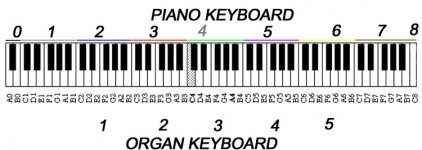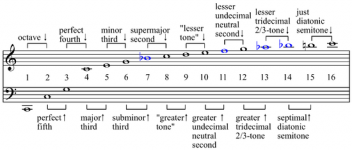Am I just lucky  ? Better measurements have given me much more pleasing sound.
? Better measurements have given me much more pleasing sound.
To be honest, I do think measurements can really guide us to better sound based on the experimenting I have done so far. Even if at first I don't always find the answers, I've noticed that often it's just me not looking hard enough or in the wrong direction.
I've done countless experiments for myself, just to learn a few things. In the end I learned more than just a few. It has been very rewarding. I try to stay open to all views and learn from both camps.
But that isn't always easy to be completely honest. As a person, I'm in the science camp, but I do want my system to be as enjoyable as it can be (which of coarse is highly subjective).
Testing theories for fun to get more insight about all the different theories existing out there. It has brought me many chills down my spine and data to remember. The hard part is to keep that mind open. It's very easy to get lost in your own journey and close your eyes for every other way. I'll do the best I can not to fall into that trap.

To be honest, I do think measurements can really guide us to better sound based on the experimenting I have done so far. Even if at first I don't always find the answers, I've noticed that often it's just me not looking hard enough or in the wrong direction.
I've done countless experiments for myself, just to learn a few things. In the end I learned more than just a few. It has been very rewarding. I try to stay open to all views and learn from both camps.
But that isn't always easy to be completely honest. As a person, I'm in the science camp, but I do want my system to be as enjoyable as it can be (which of coarse is highly subjective).
Testing theories for fun to get more insight about all the different theories existing out there. It has brought me many chills down my spine and data to remember. The hard part is to keep that mind open. It's very easy to get lost in your own journey and close your eyes for every other way. I'll do the best I can not to fall into that trap.

I stopped watching at: "We don't really listen musically".
If you haven't heard a 'cello, go listen to one. Then, when you go home and listen to your audio and it doesn't sound like that, there's a problem.
There comes a point when the math might be right... but the music isn't.
I have heard a lot of very expensive audio that doesn't sound like music. In fact, one of many reasons that I detest subwoofers (for example) is -and as I have said to so many people, so many times: "music doesn't sound like that". And, I don't mean to be a snob or a show-off, but I am Ph.D (abd) in music composition. I have taught orchestration and that is a lifetime of learning how instruments sound together, or individual voices sound upon a solo instrument.
If you haven't heard a 'cello, go listen to one. Then, when you go home and listen to your audio and it doesn't sound like that, there's a problem.
There comes a point when the math might be right... but the music isn't.
I have heard a lot of very expensive audio that doesn't sound like music. In fact, one of many reasons that I detest subwoofers (for example) is -and as I have said to so many people, so many times: "music doesn't sound like that". And, I don't mean to be a snob or a show-off, but I am Ph.D (abd) in music composition. I have taught orchestration and that is a lifetime of learning how instruments sound together, or individual voices sound upon a solo instrument.
Last edited:
There are a LOT of systems out there that sound like great Hi-Fi. You'll hear plenty of them at shows.
Rare are those that sound like real music. Rarer even are those that sound like real music across a large number of recordings.
From my experience at shows and showrooms, this isn't even on the radar for most people.
Rare are those that sound like real music. Rarer even are those that sound like real music across a large number of recordings.
From my experience at shows and showrooms, this isn't even on the radar for most people.
Shane it's interesting that you have a degree in music composition and have taught orchestration.
Most musicians I've known and worked with don't care much about high fidelity, even if they claim otherwise. The big exception has been conductors and composers. All I've worked with had a keen interest in good audio. Pierre Boulez was so interested, he founded IRCAM in 1977. (I worked there briefly).
The difference in perspective is interesting, at least to me.
Most musicians I've known and worked with don't care much about high fidelity, even if they claim otherwise. The big exception has been conductors and composers. All I've worked with had a keen interest in good audio. Pierre Boulez was so interested, he founded IRCAM in 1977. (I worked there briefly).
The difference in perspective is interesting, at least to me.
Shane it's interesting that you have a degree in music composition and have taught orchestration.
Most musicians I've known and worked with don't care much about high fidelity, even if they claim otherwise. The big exception has been conductors and composers. All I've worked with had a keen interest in good audio. Pierre Boulez was so interested, he founded IRCAM in 1977. (I worked there briefly).
The difference in perspective is interesting, at least to me.
Actually, what he claimed is a PhD (abd). That means "all but dissertation ". So he really has not completed a degree now has he.
The internet is wonderful. We can claim all sorts of things.
Actually, what he claimed is a PhD (abd). That means "all but dissertation ". So he really has not completed a degree now has he.
The internet is wonderful. We can claim all sorts of things.
But that's not all I have
Anyway. Whatever.
Last edited:
OK, thanks. I should have known that as my father was de facto abd for years. I was amazed when he finally wrote the thing. My mother didn't waste so much time on hers. 
But the PhD (or masters, or whateverz) is not the point, it's the composer/conductor thing that is. IME, they are much more interested in sound than most musicians. It's a different point of view.
But the PhD (or masters, or whateverz) is not the point, it's the composer/conductor thing that is. IME, they are much more interested in sound than most musicians. It's a different point of view.
Actually, what he claimed is a PhD (abd). That means "all but dissertation ". So he really has not completed a degree now has he.
The internet is wonderful. We can claim all sorts of things.
What a pointless and spiteful comment.
I have found one of the major (digital) issues is on the piano, between F3 and C5. The same problem exists for female voice. It seems as though there's a really big "hole" in the mid range in that register. It's hard to explain. It just seems to "pop" when it's right. Unfortunately, many Jazz singers are altos, and a lot of the chord progressions and the head of the tune is precisely in that register on the piano. Another issue is tom-toms (membranophones). A 10, 12, 13, or 14 inch tom seems to "pop" when it's right too. It seems to just jump out of the loudspeaker.
Anyone have any thoughts or solutions?
Anyone have any thoughts or solutions?
Attachments
Last edited:
May I ask one question? Audax used to make an 8 inch mid range. Considering that string on the piano, and the piano itself is a pretty big thing, would cone radiating area (of the driver) play a part in this? Would this help? I am seeing a usable frequency breadth of about 300-1200 hz.
I know this is tricky because we are moving a mass. A larger mass' rise time is significantly longer but when sustains, it produces a lot. Remembering that many of the strings on a Steinway D are 5 to 7 feet long, do we see the point I am trying to make?
To all of the people that are better at math than me -which is, well, you know, *everyone*- what is the radiating area of a 6 foot long piece of 12 gauge string in comparison to the cone radiating area of this 8 inch mid range unit?
https://www.madisoundspeakerstore.com/approx-8-midrange/audax-hm210z10-8-aerogel-midrange/
I know this is tricky because we are moving a mass. A larger mass' rise time is significantly longer but when sustains, it produces a lot. Remembering that many of the strings on a Steinway D are 5 to 7 feet long, do we see the point I am trying to make?
To all of the people that are better at math than me -which is, well, you know, *everyone*- what is the radiating area of a 6 foot long piece of 12 gauge string in comparison to the cone radiating area of this 8 inch mid range unit?
https://www.madisoundspeakerstore.com/approx-8-midrange/audax-hm210z10-8-aerogel-midrange/
Last edited:
So between 180Hz and 500Hz. The region where the room often becomes modal. Yeah that can have all sorts of problems with the way the speakers interact with the room. 'Big hole' is hard to relate to any specific issue though..
Let me introduce this to your response. From the third partial -of the overtone series- to the eighth. We're getting in to some really complex acoustical issues here because: when C1 (first partial) is played, it's not "just" one pitch. It's about 16 and they're not all in tune. The A flat and B flat (13 and 14) are WAY out.
"The series of overtones (harmonic series) for the fundamental pitch C2 would consist of C2 - C3 - G3 - C4 - E4 - G4 - B flat4 * - C5 - D5 - E5 - F sharp5* - G5 - A5* - B flat5 * - B5 - C6."
http://dictionary.onmusic.org/terms/2459-overtone
So, I guess the point I am trying to get to is: would a broader and larger midrange driver -that could handle the fundamental and as many harmonic partials in the overtone series- help? Somehow, I think It would.
Attachments
Last edited:
- Status
- This old topic is closed. If you want to reopen this topic, contact a moderator using the "Report Post" button.
- Home
- General Interest
- Everything Else
- How to listen


